Genre: Strategy/RPG Developer: Sonic Software Planning Publisher: Sega Enterprises Players: 1 Released: 1992
When discussion about console RPGs occur, the Genesis’s RPG library is a common topic. Many people underestimate the number and quality of the games in that category, often dismissing many good titles based on their lack of recognition factor. So many great RPGs, like Starflight, Technoclash, and the Uncharted Waters series don’t get the attention they deserve. In truth, there are a bunch of great options on the Genesis, including many translated ones like King Colossus, and they deserve to be played.
Of course, one franchise that gets plenty of attention is Shining Force. The three main games are among the most popular RPGs ever made, and the series still continues to this day (albeit in a much different form). Released as a sequel to Sega’s previous RPG dungeon crawler, Shining in the Darkness, Shining Force: Legacy of Great Intention went in a different direction. It replaced the first-person view and random battles with a grid-based strategy/RPG hybrid formula. Shining Force was Sega’s first attempt at the genre on its 16-bit console, but reportedly neither of its developers, Climax Entertainment nor Camelot Software Planning, took their cue from Nintendo’s Fire Emblem. Rather, the teams were inspired by a more obscure game, the 1988 Japanese PC title Silver Ghost. Shining Force may not have been the first game to mix these two genre successfully like so much digital peanut butter and chocolate, but it was a pioneer on the Genesis. Also, unlike Nintendo’s game, Shining Force received a western localization.
In this first Shining Force adventure, players assumed the role of Max, a young man with an unknown past. The Japanese version described him washing up on a beach with amnesia and being discovered by Lowe, a major character, something the poor localization left out. In fact, just about all of Max’s backstory was missing, despite the fact that he became a figure of prominence in the kingdom of Guardiana, in the land of Rune. The nearby kingdom of Runefaust was storming across Rune in an attempt to open the Gate of the Ancients and resurrect Dark Dragon. Max was tasked with assembling a team to stop them, and things developed heavily from there (no spoilers!). The story may not seem like much at first, but the multiple dialogue scenes between battles and even during them really fleshed things out, and there were multiple plot twists that made the drama more engaging than is first apparent.
Shining Force played like a typical strategy game in that players assembled a team of twelve warriors at a time and took them into combat. There were fighters, archers, mages, monks, and other classes that permitted a great deal of customization. The cast had a large diversity of races as well, from humans, dwarves, and elves to centaurs and wolfmen. They could be swapped out between battles and though it was easy to become attached to specific characters, it was important to upgrade them all appropriately, as different battles and terrain required specific mixtures of characters. RPG elements like leveling and learning new spells and abilities were complimented by town exploration, where Max and his friends learned more details about Runefaust’s plans, bought new equipment, and performed the time-tested RPG tradition of entering strangers’ homes to search for items. Each battle earned experience points that improved offensive and defensive capabilities, as well as magic. When a member of the force reached level 10, they were given the option to be promoted to a different, more powerful version. Watching them evolve like heavily-armed Pokémon was satisfying, and it can be heart-breaking to lose a character that took so long to strengthen. Thankfully, they could be revived between battles.
Control was handled via a menu system – seemingly typical RPG fare. I, for one, am happy that Camlot/Climax maintained the animated image style from Shining in the Darkness; it was much more intuitive and created less clutter than text. A little figure shook his head up and down for “yes” and side-to-side for “no.” Pouch signs represented items, and balls of flame signified fire magic. It was cute and easy to learn. It made the game much easier to pick up and play, to be sure. The characters all moved along a flashing grid, so it was a simple task to see how far they could roam in battle. Overall, the control system was solid and fluid. The series would continue to sport it for years, and even the developer’s later projects, like the Game Boy Advance series Golden Sun, incorporated it.
Camelot/Climax continued the same style of presentation from Shining in the Darkness (and another Climax game, Landstalker, shared it as well). The game made smart use of the Genesis color palette, with bright and varied tones and hues that gave the terrain of Rune a great look. Overall, two styles of presentation were present: one for the overhead field, where the combatants moved around, and one for the actual battles themselves. The map scenes weren’t as detailed, but they looked great. However, it was the battle scenes where Shining Force’s visuals were most impressive. They were detailed and nicely animated, and the game treated players with some wicked spell effects that were quite impressive in 1992 and still hold up today. Rounding out the stellar presentation was some top notch music and sound effects. The audio used a decent mix of sound effects to give the magic a greater sense effect (particularly the lighting and fire spells), and the musical score is varied enough to match the game’s different plot points. At the time, one got the impression that the developers were well in tune with the 16-bit hardware to make it perform so well overall, and it was surprising to see that they only had the previous Shining game under their belt when they tackled this project.
There were some issues with Shining Force that have to be mentioned. First is the weird English translation that omitted many important plot elements, such as Max’s origin. Spell and character names were also altered from the Japanese original, though many were corrected in later sequels. The inventory system was also a bit problematic, such as when one found an item in town and it automatically got assigned to Max. It could be annoying to remember that I forgot to give that herb to Tao when she was near death while Max had more herb on him than Cheech and Chong. It would also have been nice to converse in towns with a simple button press rather than having to enter the menu, but such a mechanic was not a universal thing in RPGs in 1992, and it didn’t bog things down too much.
Ultimately, these small quibbles weren’t enough to detract from just what a great game Shining Force is. Climax/Camelot produced a really polished strategy/RPG hybrid that is still as much fun to play today as it was in 1992, and it sets up the world of the Shining games nicely. I recommend playing the different tiles, including the stellar Shining Force CD on the Sega CD, chronologically. Shining in the Darkness was released first, but it’s actually set after the original Shining Force in the chronology. Many characters and locations appear or are referenced in the different titles, and the custom extended all the way to the Saturn with Shining Wisdom and Shining the Holy Ark, along with the three-episode final game in the Shining Force series. Only the first episode of Shining Force III was officially localized, but Saturn fans have since translated the other two. Legacy of Great Intention is a wonderful introduction to that fascinating world and remains a joy to play. It deserves a place on everyone’s Sega shelf.
SCORE: 9 out of 10

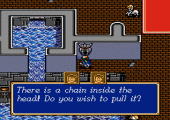
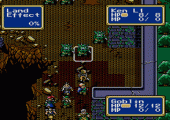
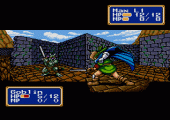
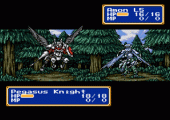
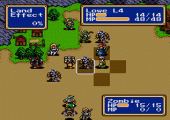
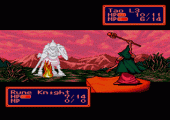
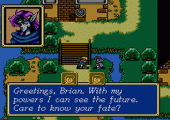
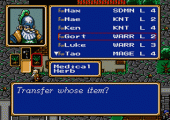
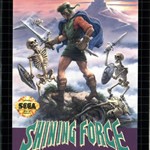
Recent Comments